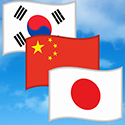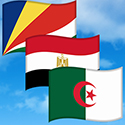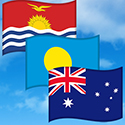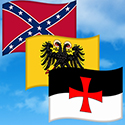- All Flags
- Flags of Countries by Continent
-
Flags of Organizations
- Flags of UN countries
- Flags of the European Union countries
- Flags of NATO countries
- Flags of the countries of the Organization of Islamic Cooperation
- Flags of the countries of the Organization of American States
- Flags of the Arab League countries
- Flags of the African Union countries
- Flags of the countries of the Union of South American Nations
- Flags of the Commonwealth of Nations
- Flags of the countries of the Secretariat of the Pacific Community
- Flags of the Nordic Council countries
- Flags of the Caribbean Community
- Flags of the countries of the Association of Southeast Asian Nations
- Flags of the East African Community
- Flags of the countries of the Organization of Turkic States
- LGBT Community Flags
- Historical Flags
- Ethnic Flags
- Flags of the USA (states)
Assyrian Flag
The Assyrian flag is a modern and profoundly symbolic representation of the Assyrian people's ancient heritage, their historical homeland in Mesopotamia, and their enduring spirit. Adopted in 1968, the flag is not tied to a single state but serves as a unifying emblem for a dispersed global community. It visually narrates the history, struggles, an..
Flag of the Crimean Tatars
The Crimean Tatar flag is a profound symbol of the identity, history, and resilience of the indigenous people of the Crimean Peninsula. Its design, while seemingly simple, is steeped in centuries of history and meaning. For the Crimean Tatar people, the flag is much more than a national emblem; it is a testament to their enduring connection to thei..
Flag of the Gypsies (Romans)
The Romani flag is a powerful and globally recognized symbol of the Romani people (also known as Roma). It is not the flag of a sovereign state but represents a transnational ethnic group with a rich history, a shared culture, and a unique identity. Adopted in 1971, this flag is a beacon of unity, resilience, and hope for a people who have faced ce..
Flag of the Kurds
The Kurdish flag, known as Ala Rengîn (The Colorful Flag), is a powerful and unifying symbol of the Kurdish people's identity, national aspirations, and centuries-long struggle for freedom and dignity. More than just a national emblem, it is a beacon of hope and a testament to the resilience of a people without a sovereign state of their own...

















 Flags of Europe
Flags of Europe Flags of Asia
Flags of Asia Flags of Africa
Flags of Africa Flags of North America
Flags of North America Flags of South America
Flags of South America Flags of Australia and Oceania
Flags of Australia and Oceania Flags of Antarctica
Flags of Antarctica Flags of International Organizations
Flags of International Organizations LGBT Community Flags
LGBT Community Flags Historical Flags
Historical Flags Flags of the US States
Flags of the US States Ethnic flags
Ethnic flags